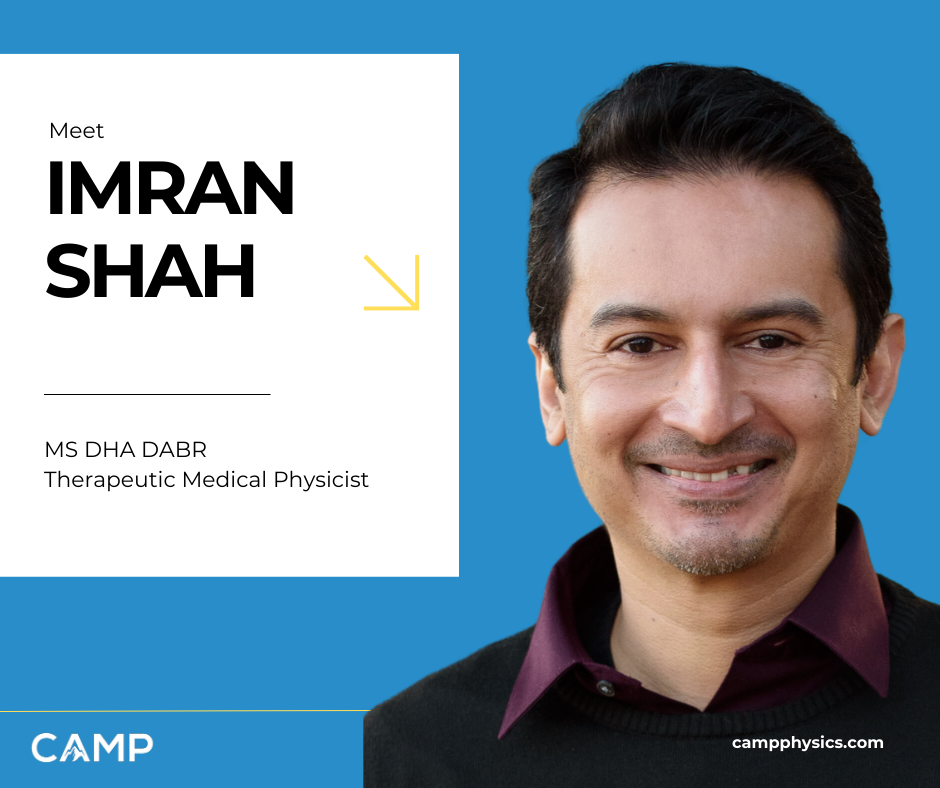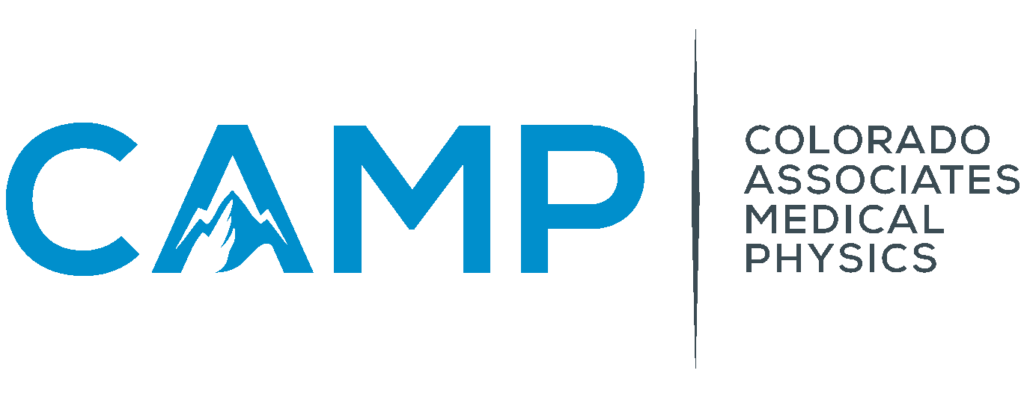MedPhys Career Spotlight: Imran Shah

Introduction:
Meet Imran Shah, a dedicated medical physicist with a unique career journey that spans both human and veterinary radiation therapy. From his roots in Bangladesh to his influential role at CAMP, Imran’s work has been shaped by a desire to combine his love for physics with helping people around him. In this interview, Imran shares his career story, insights on the future of medical physics, and how he’s integrating his passion for writing into his work with cancer patients.
Q: Can you share a bit about your background and what led you to pursue a career in medical physics?
I’m originally from Bangladesh and moved to the U.S. in 2000. Initially, I was planning to study engineering, but during my studies, I came across a medical physics class—it was the first time it was offered at my school. That class changed everything for me. I was introduced to a medical physicist in the small town of Bristol, Tennessee, where I was studying. I spent some time shadowing him over the summer and loved what he was doing. It was a great way to combine my interest in physics with directly helping people. From there, I pursued a career in medical physics, and here I am today.
Q: What is your role within the organization?
As a medical physicist, my role involves overseeing the quality of treatment in the department. On a day-to-day basis, that means attending morning huddles, checking in with therapists and dosimetrists, ensuring the machines are functioning properly, and verifying that patients’ treatment plans are accurate. Essentially, I make sure that the physicians’ prescriptions are executed as precisely as possible, and if there are any technical issues, I troubleshoot and resolve them. It’s a role that requires both technical and medical knowledge, as we bridge those two areas in the treatment process.
Q: What are some of the challenges you’ve faced in your career, and how have you overcome them?
One of the biggest challenges for me personally has been adapting to a new culture after immigrating to the U.S. As an immigrant, I had to find my place in this new environment and figure out how to navigate my career. My journey took me through the South before eventually bringing me to Colorado. One significant challenge and opportunity both was my decision to work with animals, which has been incredibly rewarding. It was an opportunity that came along, and I decided to pursue it alongside my work with human patients.
Q: Speaking of veterinary radiation therapy, what inspired you to start working with animals, and how is that experience different from working with human patients?
I saw a need for standardization in veterinary radiation therapy. There’s a lot of data based on human treatments, but when it comes to animals, the standards and practices aren’t as well-established. This felt like an opportunity to make a real difference in the field.
Working with animals presents unique challenges. Animals come in a wide range of sizes, so you have to adapt your approach depending on whether you’re treating a large dog or a small cat. Animals also have to be under anesthesia during treatment, so time is of the essence. Working in veterinary radiation therapy definitely requires a lot of creativity! Each animal is different, and you have to think on your feet—I’ve heard of cases where they have treated everything from a goldfish to a hyena. I’m lucky to work with such a great team at the veterinary center. The staff there has been really supportive, and collaborating with them makes the challenges much easier to handle and the whole experience really enjoyable. It’s incredibly fulfilling to be able to contribute to this area of medical physics and help shape its future.
Q: If you could go back and give advice to your younger self, what would it be?
I would tell myself that while the technical aspects of medical physics are important, building strong relationships with people is just as crucial. In this field, it’s not just about implementing technical changes; it’s about how you propose and execute those changes within a team. Aligning everyone to the same vision and working collaboratively can be a powerful force. I’d remind myself that in the end, it’s about people,, and how you bring about change is just as important as the change itself.
Q: What excites you most about the future of medical physics, and what challenges do you foresee?
I’m really excited about the potential of artificial intelligence and automation in medical physics. AI is going to be huge, and it will bring new efficiencies to the field. However, it’s important for medical physicists to understand the limitations of AI and ensure that we don’t blindly follow technology without fully understanding its implications. Our job will be to stay ahead of these advancements and ensure they’re used correctly.
One of the biggest challenges facing the field right now is the shortage of medical physicists, especially in rural areas. There just aren’t enough residency programs to meet the demand, and this has created a bottleneck in the profession. We need to address this issue by expanding residency opportunities and finding ways to support rural communities through remote work and other innovations.
Q: You’ve also launched the “Writing with Cancer” program. Can you tell us more about that and why it’s important to you?
Writing has always been a big part of my life. It’s something I turn to during times of stress, and it’s helped me process a lot of my own experiences. The “Writing with Cancer” program grew out of my desire to combine my love for writing with my work in medical physics. The program is designed to offer cancer patients an outlet to express themselves through writing as a way to cope with the emotional challenges of their treatment.
The program can be attended over Zoom and/or in-person sessions, where we guide participants through writing exercises and discussions. My goal is to give them the tools to continue writing even after the program ends, helping them process their emotions and connect with others going through similar experiences. It’s something I’m incredibly passionate about, and I hope it can make a difference in the lives of those who participate.
Read more about Writing with Cancer and how to get involved.
Conclusion:
Imran Shah’s career is a testament to the power of combining passion with expertise. Whether he’s working with human patients, treating animals, or leading a writing program for cancer patients, Imran brings a dedication to excellence and a commitment to making a difference. As medical physics continues to evolve, Imran’s forward-thinking approach and focus on community building ensure that he’ll remain at the forefront of the field.
Connect with CAMP
Looking to connect with Imran? Send us a message on LinkedIn.
Want to learn more about medical physics, veterinary radiation therapy, and the latest advancements? CAMP offers a wealth of resources and expertise to help you stay informed and engaged in this dynamic field. Whether you’re a healthcare professional, student, or simply curious about the science behind radiation therapy, CAMP is here to support your journey.
Visit our website to explore our services, discover educational opportunities, and join a community dedicated to advancing medical physics.

